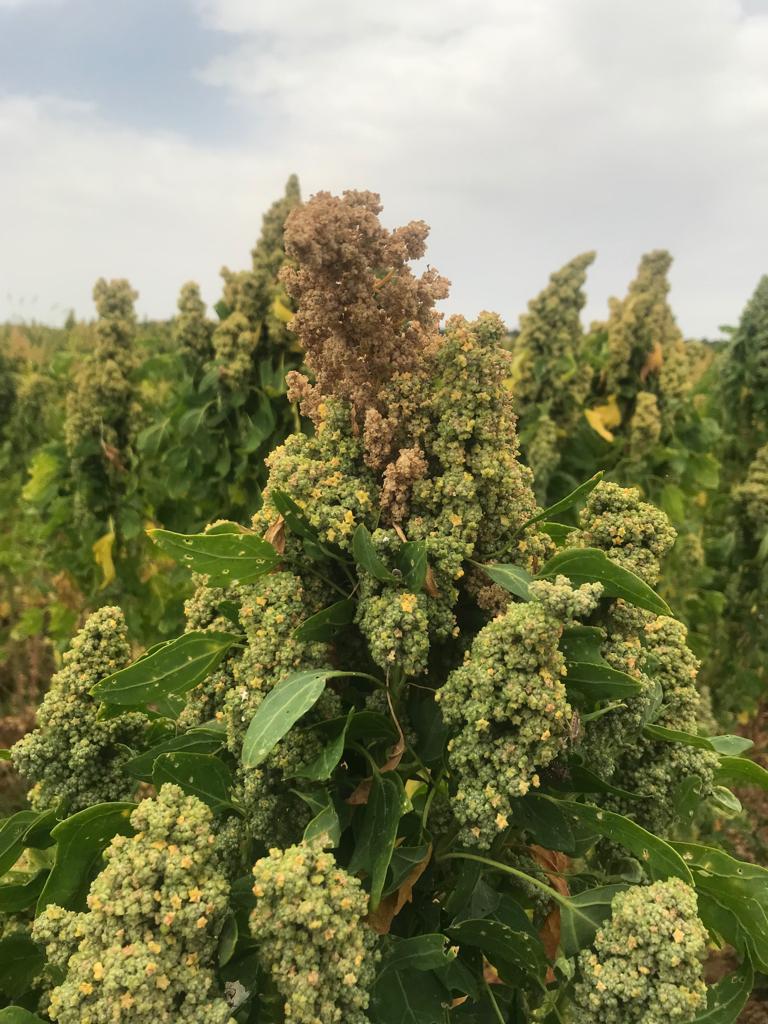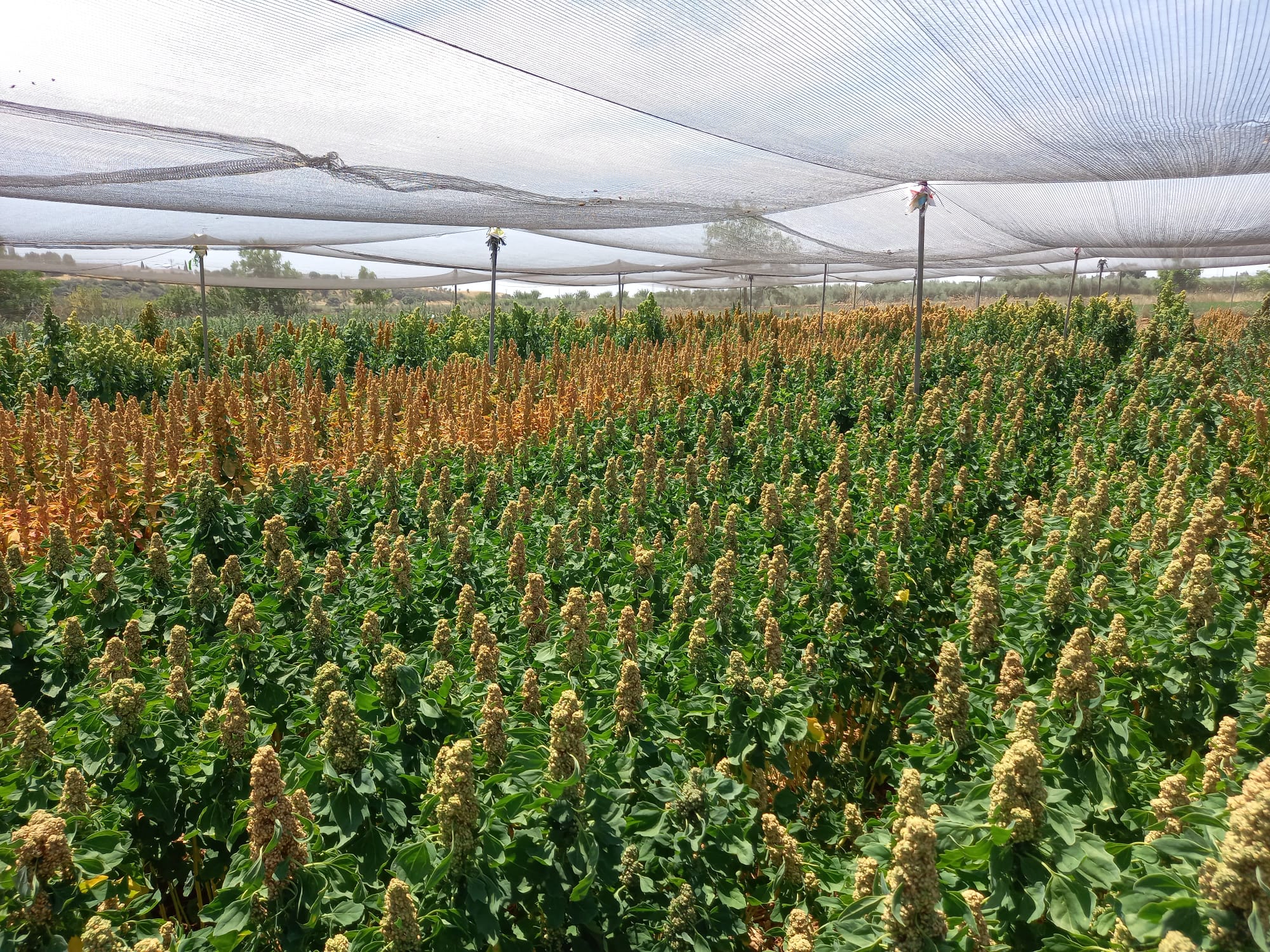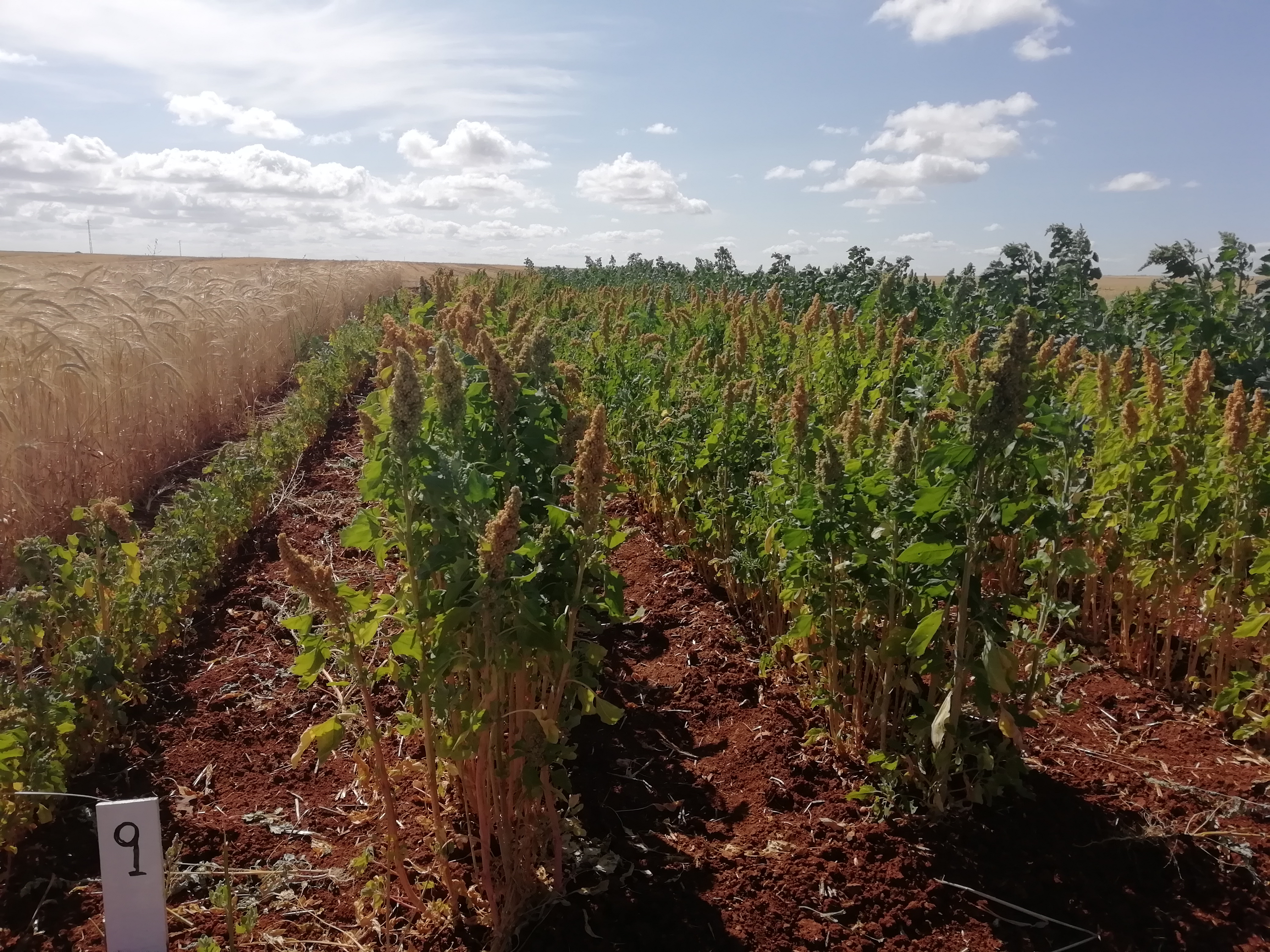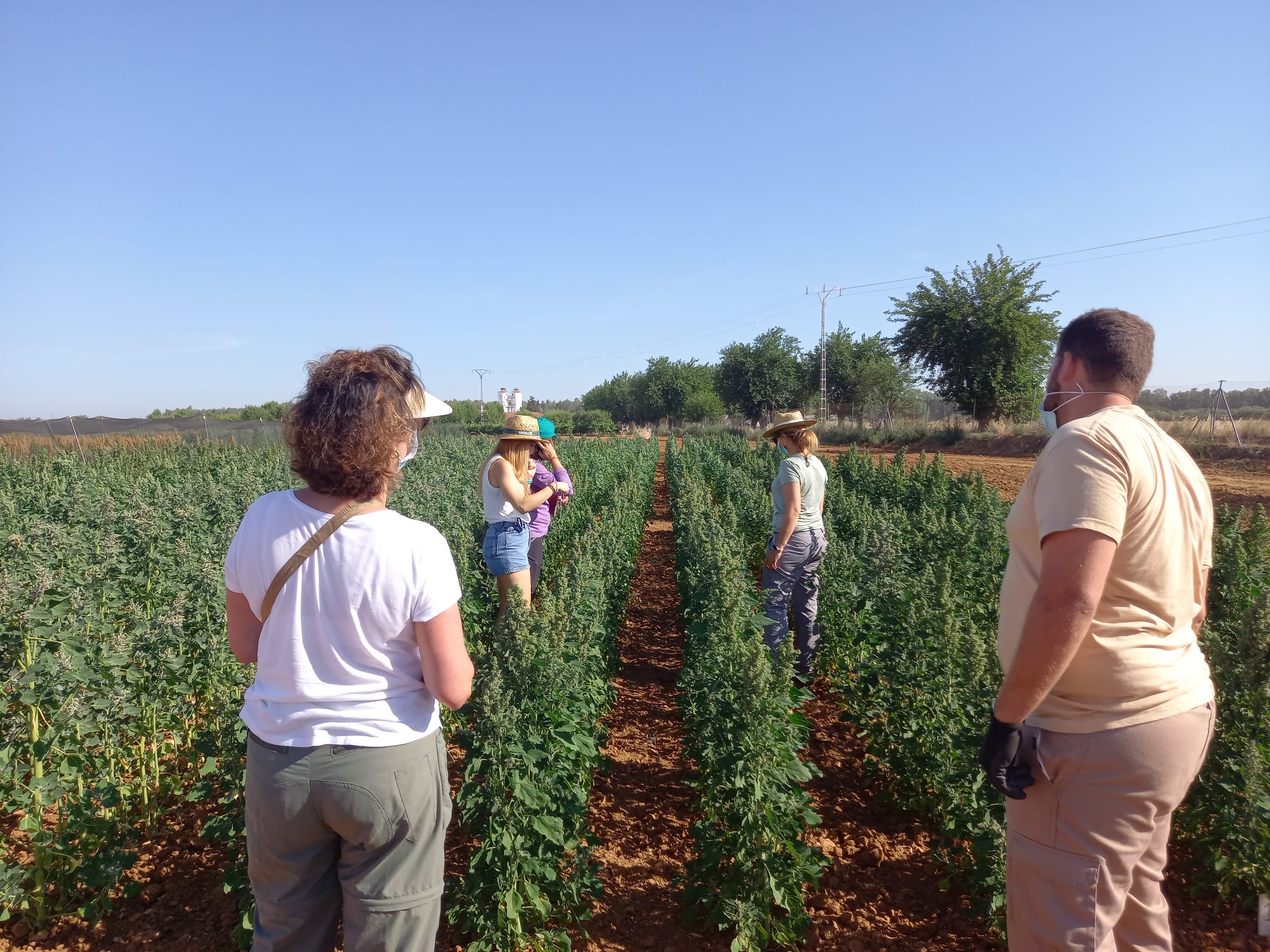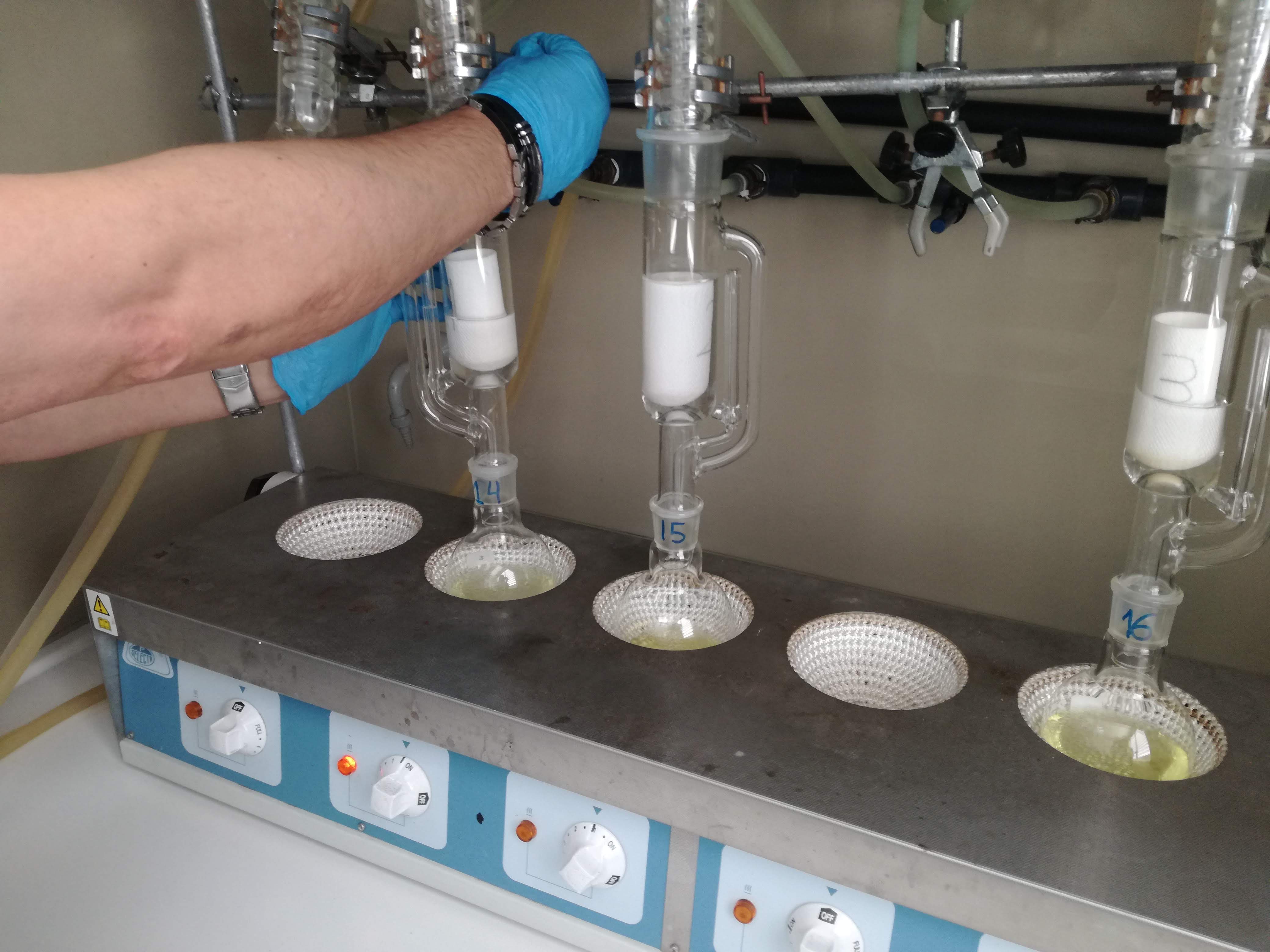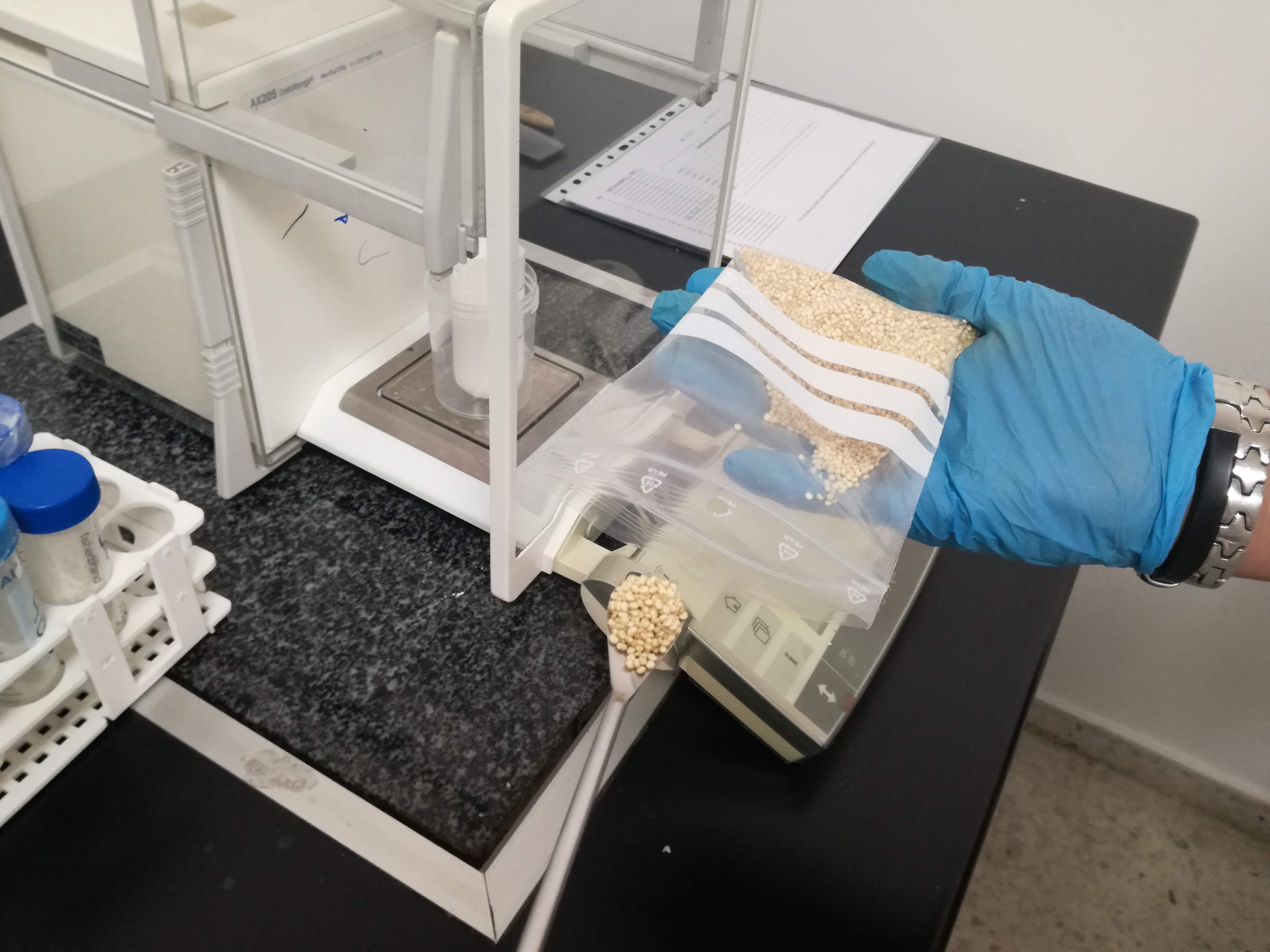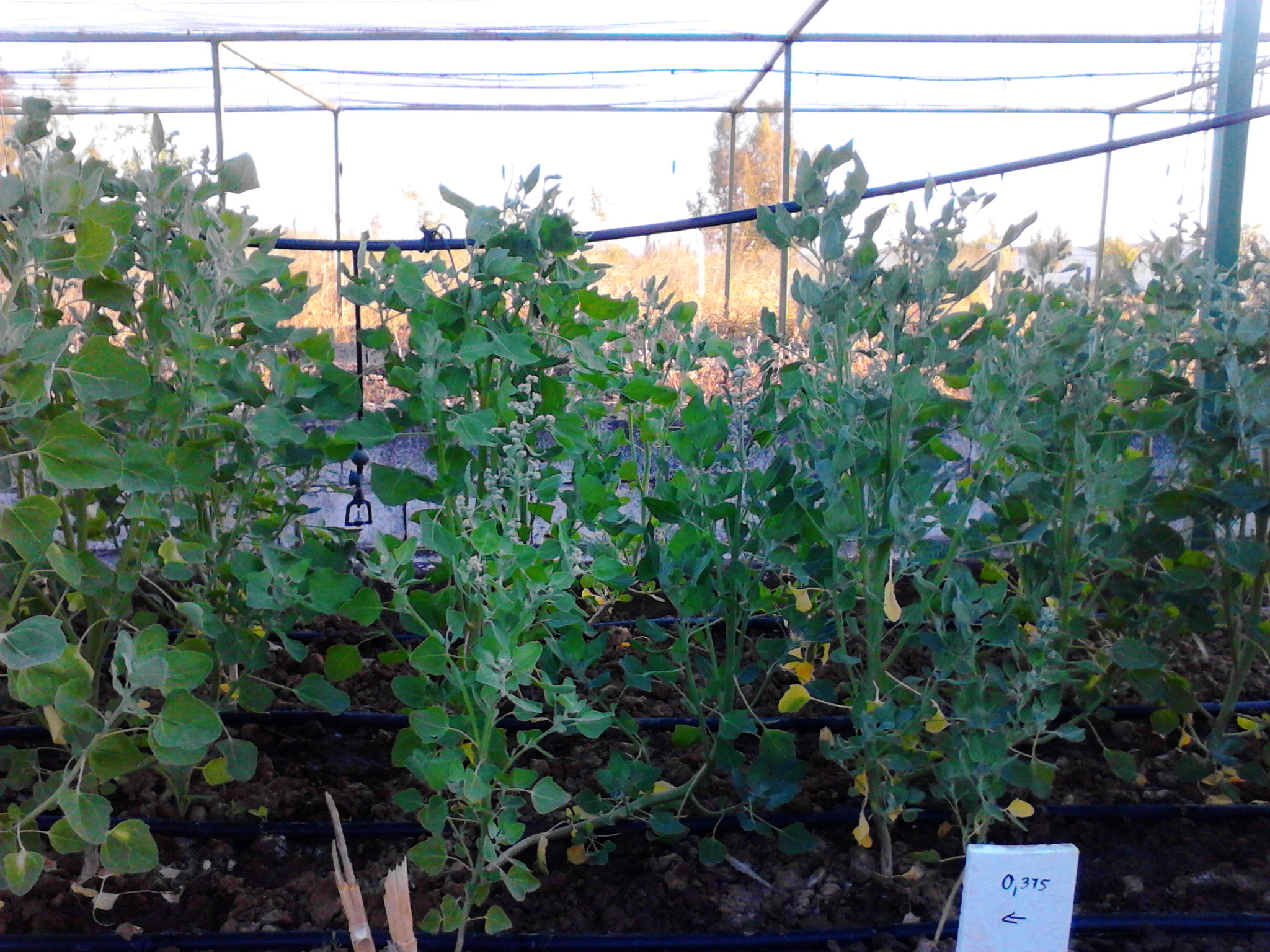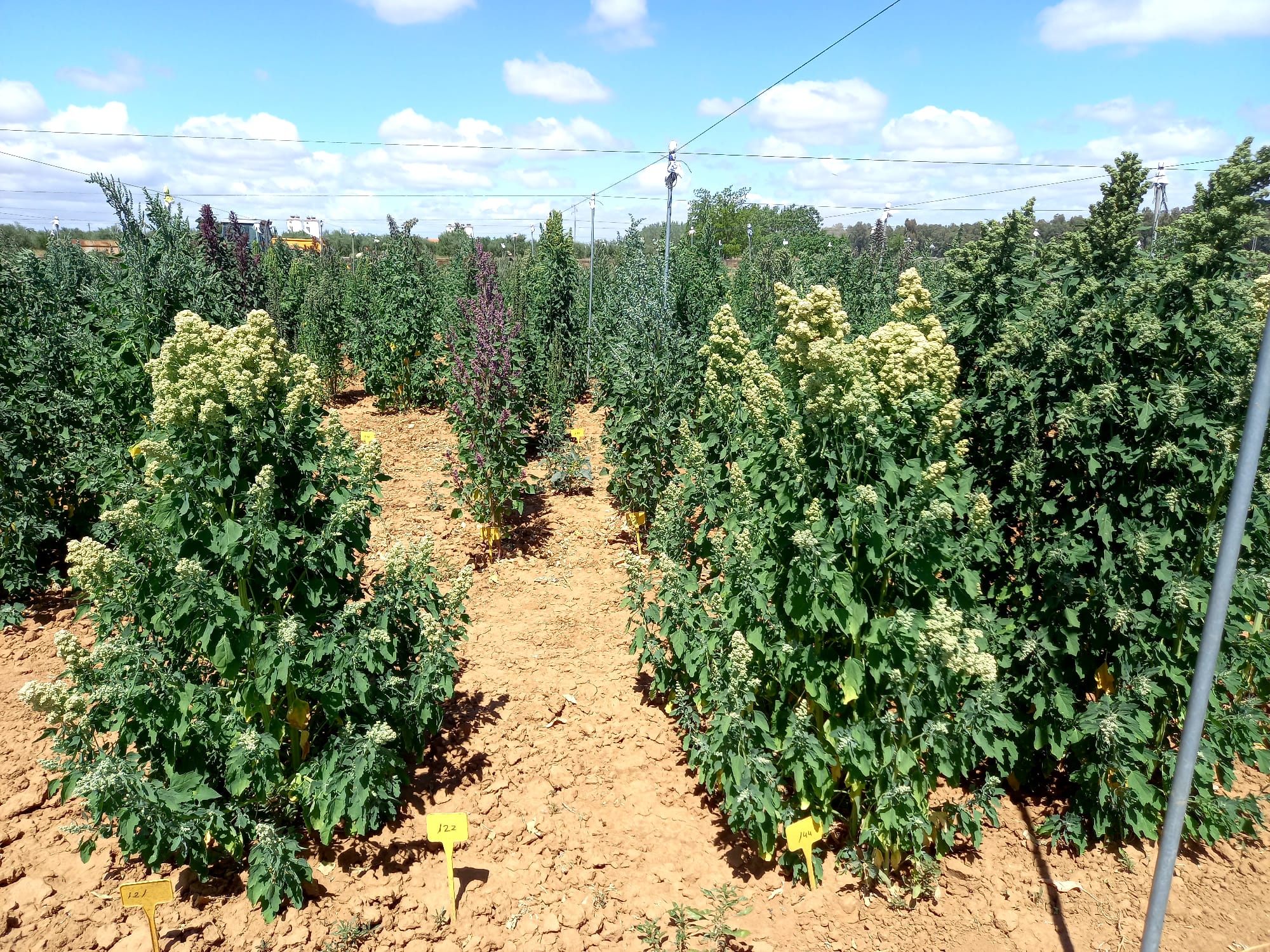
Quinoa
 General information
General information
Traditional extensive crops like cereals, amongst others, are essential for the agricultural industry in Extremadura and they have significantly contributed to retain population in rural areas, where it is one of the main economic activities. However, the current circumstances (little profitability of some of these crops, the direction of EU agricultural policy in crop diversification and the new dietary trends) are promoting the search of optional crops.
 Introduction of quinoa in Extremadura
Introduction of quinoa in Extremadura
The growth of quinoa (Chenopodium quinoa Willd.) has experienced an exponential increase in the latest years -with rising prices- that is motivated by the healthy properties of its seeds and the new dietary trends. It is a herbaceous annual plant originating in the Andean region of South America. It has raised interest to such an extent that its production has been expanded to other areas such as the Iberian Peninsula.
According to the data provided by the Ministry of Agriculture (2017), the growth of quinoa in Spain represents approximately 6,000 hectares, out of which over 90% is produced in Andalusia, and mainly in Seville. Although it was initially introduced in irrigation farming areas, the currently dry farming area is now 47% of the total. It was first introduced in Extremadura in 2019, although it still represents an incipient production.
 Varieties and agronomy
Varieties and agronomy
Quinoa is a species with major genetic potential, which helps with its adaptation to different conditions. However, this plant is sensitive to the length of light and dark periods, requiring a short light period. Another inconvenience is its susceptibility to flowering in high temperatures, a fact that may reduce production. There are currently varieties that are less demanding in terms of the daylight period required, which include the varieties obtained in Europe, and mainly in Northern countries.
At CICYTEX we began testing with quinoa in 2016 at our Finca La Orden. We used varieties donated by producer Algosur. For the first projects we assessed the adaptability of the plants to the agricultural and weather conditions of Extremadura and determined the most adequate season for planting, as well as the most recommendable planting system and dosage.
 Dry and irrigation farming
Dry and irrigation farming
We also studied quinoa as an alternative crop in cereal dry farming areas (Campiña Sur and the Olivenza region), and tested this crop in irrigation farming regions such as Vegas del Guadiana and the north of the Caceres province. On the other hand, during this time, other agronomic aspects have been under study, such as the fertilising and water needs. We are currently testing the new varieties in cooperation with the Autonomous University of Madrid in order to assess this crop in both irrigation and dry farming areas, and improve their adaptation to weather stress conditions. We are also developing a project in cooperation with CSIC (IAS Cordoba) to obtain new varieties that are adapted to the climate conditions in Extremadura, with special attention to dry farming.
 Nutritional characteristics of tested varieties and preparation of new foods
Nutritional characteristics of tested varieties and preparation of new foods
Quinoa stands out for the quality of the protein in its grain, the content of which ranges between 14-20%. It is also gluten-free and has a balanced amino acid profile. It can be used in the diet of people with celiac disease. It also has a high level of mineral content. The fat content is reduced, but it is very healthy fat mainly composed by polyunsaturated fatty acids.
Given the importance of its nutritional properties, it was necessary to characterise the varieties tested at CICYTEX and find out if high temperatures and other weather and agricultural conditions influenced their composition. The initial results indicate that the varieties under study have an outstanding nutritional profile, in line with the benefits of growing quinoa.
 New products including quinoa
New products including quinoa
Taking into account the composition of the varieties under study at CICYTEX, a new line of work has been initiated leading to the preparation of new foods based on quinoa, such as snacks or cold drinks, according to recent market demand.
 Use of by-products
Use of by-products
At CICYTEX we have a line of work aiming at the use of those by-products deriving from agricultural and farming activities that may add value, thus improving farm sustainability according to the green and circular economy strategy. In the case of quinoa, the straw that derives from the harvesting of the grain has been studied, i.e. its production has been quantified and its composition analysed. Quinoa straw has a relatively high protein content and a higher mineral content than cereal straw. For this reason, quinoa straw could be used in animal feeding, although we still need to assess other parameters such as palatability (nice to the palate) and digestibility. In the event that straw was returned to the land, we have quantified the mineral content that would be added to the soil.






